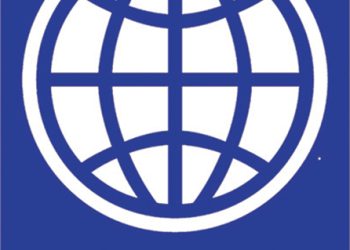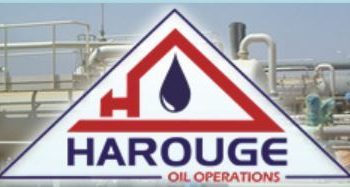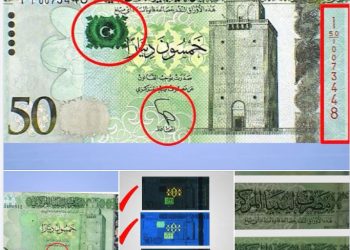By Sami Zaptia.
Tripoli, 25 May 2013:
An IMF Working Paper entitled “Searching for the Finance-Growth Nexus in Libya” written by Serhan Cevik . . .[restrict]and Mohammad Rahmati concludes that there is “a negative correlation between the hydrocarbon windfall and commercial bank lending to the private sector”.
The paper investigated the causal relationship between financial development and economic growth in Libya during the period 1970–2010. The empirical results, the paper says, indicate the lack of long-run relationship between financial intermediation and nonhydrocarbon output growth.
“A well-functioning financial system is critical for enhancing the pace—and quality—of economic growth”
The study reports that “despite a significant expansion, financial intermediation in Libya remains rudimentary and shallow. The empirical results indicate that there is no long-run relationship between financial intermediation and nonhydrocarbon growth during the period 1970–2010.
According to the empirical findings presented in this paper, “nonhydrocarbon economic activity depends largely on government spending, which is in turn determined by the country’s hydrocarbon earnings”.
Looking forward, the study reports that “financial development is essential to mobilizing domestic savings in order to fund private sector–led economic diversification, as well as to providing a greater range of high-quality financial services. In turn, the development of a growth-enhancing, vibrant financial system requires a far-reaching spectrum of structural reforms and policy measures”
Libya’s financial system
Libya’s financial system is composed of a network of 15 commercial banks, four specialized credit institutions, five insurance companies, and a recently established stock market. Although the banking system managed to sustain its stability with a significant balance sheet expansion over the past decades, the report concludes that “financial intermediation remains shallow and concentrated”.
Commercial bank lending to the private sector, the report continues, increased from 2.2 percent of GDP in 1970 to 31.5 percent in 1990, but then declined to 21.8 percent in 2000 and 9.5 percent by end-2010. The report goes on to note that “this is particularly surprising given the massive amount of excess liquidity in the banking sector”.
“The financial system in Libya has undergone substantial changes over the past decade, but remains rudimentary, shallow, and bank-dependent”
This is explained in the huge bank liquidity. “While credit to the private sector increased in nominal terms from 2.7 billion dinars in 1990 to 8.8 billion dinars by end-2010, commercial bank deposits with the Central Bank of Libya (CBL) expanded from 1.4 billion dinars (or 20 percent of total assets) to 43.9 billion dinars (or 67.2 percent of total assets).”
“In other words, the share of credit to the private sector in total banking assets declined from over 40 percent to about 13.5 percent, as banks accumulated “excess” liquidity in the balance sheet.”
“This behavior reflects, in our view, an amalgamation of factors including the volatility of hydrocarbon earnings, lack of adequate lending opportunities in nonhydrocarbon sectors of the economy, and institutional bottlenecks such as nonexistence of a credit information system”.
“Profitability remained practically unchanged over the past decade”
Analysing the status of Libya’s banks, the report says that asset quality steadily improved, as demonstrated by a decline in the nonperforming loan (NPL) ratio, and better loan-loss provisioning. The NPL ratio fell from the peak of 35.5 percent in 2004 to 20.2 percent as of end-2010, while the capital adequacy ratio increased from 10.4 percent to 17.3 percent.
“The banking system appears to be sound, but its growth is driven mainly by off-balance sheet items.”
On the other hand, profitability indicators, such as the return on assets and the return on equity, remained practically unchanged over the past decade—at an average of about 1 percent and 11.5 percent, respectively.
“Particularly after the removal of international sanctions in 1999, Libya’s banking sector experienced a momentous increase in off-balance sheet items such as letters of credit and guarantees. As of end-2010, off-balance sheet items amounted to 84 percent of on-balance sheet assets, compared to 12 percent in 2004, which is partly an indication of banks’ aim to generate fee income when lending is constrained and net interest margin is low.”
Banking Reform
The extent and diversity of financial services provided are limited and hindered by institutional weaknesses including the lack of a robust system of property rights, the absence of credit assessment information, the lack of competition, and government ownership. Since the removal of international sanctions, Libya moved forward with a broad spectrum of reform initiatives aimed at achieving greater openness and gradual liberalization of the financial system.
“Libya moved forward with reform initiatives prior to the revolution, but the banking system remains predominantly in the hands of the public sector.”
Nevertheless, in spite of the privatization of two state-owned banks, the banking sector still remains predominantly in the hands of the public sector and operates under extensive controls of the government.2 Furthermore, specialized credit institutions continue to function as an extension of the government in providing support to certain sectors such as agriculture, real estate, and manufacturing, through heavily subsidized credit facilities.
Oil revenue hampers financial sector
“There appears to be a high degree of correlation between hydrocarbon GDP and nonhydrocarbon GDP, which can be interpreted as a reflection of the spillover effects, mainly through the fiscal channel. At first glance, this may seem contrary to the “resource curse” literature that documents a negative relationship between resource rents and output growth.
However, these studies tend to focus on the long-run effects of resource abundance by using cross-sectional data. In the case of Libya, although there is a robust relationship between the hydrocarbon windfall and nonhydrocarbon GDP growth, there is also a negative correlation between the hydrocarbon windfall and commercial bank lending to the private sector.
“A windfall in hydrocarbon revenue tends to increase nonhydrocarbon GDP, while hampering financial deepening”
Although data constraints prevent a conclusive analysis, we reason that the crowding-out effect may be a dominant factor in Libya. In other words, a large expansion in government spending as a share of GDP shrinks the private sector’s role in overall economic activity.
According to the study’s empirical findings, “nonhydrocarbon economic activity depends largely on government spending, which is in turn determined by the country’s hydrocarbon earnings. In our view, the lack of long-run relationship between financial intermediation and nonhydrocarbon growth in Libya reflects an amalgamation of factors including the volatility of hydrocarbon earnings, lack of adequate lending opportunities in nonhydrocarbon sectors of the economy, and institutional bottlenecks such as nonexistence of a credit information system”.
In rounding-up, the IMF Working Paper concludes that “the development of a growth-enhancing financial system requires a far-reaching spectrum of structural reforms. “Financial development”, the report continues “is essential to mobilizing domestic savings to fund private sector–led economic diversification, as well as to providing a greater range of high-quality financial services. That in turn requires a comprehensive strategy based on a well-sequenced set of structural reforms and policy measures that will bring Libya’s financial system more in line with international practices”. The report list the reforms as follows:
- safeguarding macroeconomic stability, especially through a countercyclical fiscal policy stance that minimizes the impact of volatile oil prices;
- improving the legal framework to protect creditor and minority shareholder rights;
- streamlining the insolvency regime;
- enhancing competition in the banking sector to improve the quality of intermediation and to strengthen bank governance;
- reducing the role of state banks, including SCIs, which tend to lead to distortions and impede financial intermediation;
- augmenting the system of credit information gathering and sharing, which would enable banks to better assess credit risk and thereby improve access to finance, especially for small and medium-sized enterprises and low-income households; and
- introducing market-oriented monetary policy instruments, which would help in managing large amounts of structural excess liquidity
For the full paper see: http://www.imf.org/external/pubs/ft/wp/2013/wp1392.pdf [/restrict]







